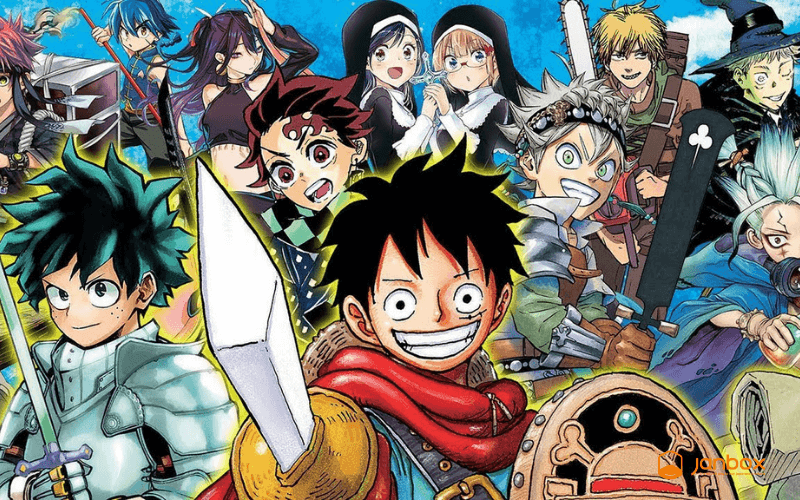Global impact of manga and anime: A cultural revolution
Japanese popular manga and anime books and movies are currently the global big trendsetters, and it leads to the reform of the content and the story flow all around the world. Emerging from the soil of Japan, these mediums have evolved over the eras and now have a presence in all aspects of society, from the world of entertainment, through the world of art, and into education, and even the world of technology. Their effects illustrate not only the attractiveness that Japanese creativity could generate, but how storytelling can avoid the barriers of geography and culture.
The evolution and global spread of manga and anime
Japanese graphic novels (manga) and amateur animations (anime) are the pillars of Japanese culture. Publications in this genre, which are comparable to the manga of the early 20th century, are influenced by people such as Osamu Tezuka, who pioneered in this form of storytelling. Not only did Astro Boy by Tezuka bring about the current dynamic art fields of manga and anime, but it also gave rise to the current artistic type of highly differentiated characters.
This growth has continued exponentially. By 2023, the anime industry was over $31 billion in size and fuelled by the emergence of streaming services like Crunchyroll, Funimation, and Netflix, which boast substantial anime libraries as a good example. It is no longer limited to the genre of manga, but manga has transformed into a global phenomenon, with hundreds of millions of copies sold around the world.
Online gaming and casino adaptations
One convergence between anime and gaming is online casinos. In recent years, online casino platforms have grown in popularity due to the accessibility of platforms. Players have access to many tools online supporting in decision making related to gambling, such as information on how to play online casino games for real money and other sources of information. In the light of the popularity of online casino sites, many online casinos have employed the appeal of anime to draw an older audience. Machines featuring anime figures or themes, e.g. machines featuring sailor moon or one piece, are gaining wide popularity, bringing together games and entertainment in remarkable ways.
The impact of animation on the cyberspace is also evident in particularly in design of gaming platforms, and the narrative and portrayal of character. Games, such as Final Fantasy and The Legend of Zelda, have also adopted techniques from anime.
Manga and anime’s transformative influence on art and storytelling
Manga and anime have significantly impacted storytelling techniques globally. For the first time, the storytelling genre that manga is characteristic of, generated new storytelling formats by way of dynamic panel arrangements, much along the lines of those used in Western comic and graphic novels.
Animation’s visual and narrative style has permeated the game industry as well. The notion of representation, for example the emotional value of the representation as what is represented as the target of interest, has resulted in the paradigm of digital avatars and characters above the top of the head.
Educational and cultural influence
It is increasingly becoming a medium for cultural exchange. They give us insight into the culture of Japan, in Japanese social norms, and in Japanese values. Some content, including My Neighbor Totoro, do represent some of their Japanese view on nature, while other ones, for example Attack on Titan, do reflect some of the survival, and morality worries which are existential issues.
This cultural impact extends to education. Institutions the world over are recording rising numbers of students who attend because they want to learn Japanese, language and culture and, above all, animation and manga. Anime conventions and fan meets are the ones that are a showcase of this cultural generation of value creation spaces, where fans are able to learn about Japanese culture, for example by way of the practice of cosplay, art, and the Japanese language, and engage in conversation and activities, etc.
Impact on fashion and lifestyle
Manga and anime have notably influenced global fashion. Japanese fashion is strongly connected with anime images, thus some popular brands, including Uniqlo, Gucci, Louis Vuitton, have designed clothes using the iconic Naruto or One piece image. With anime influences, Harajuku trend has flown over geographical limits and transformed itself into a world fashion phenomenon, because Harajuku fashion has retroactively borrowed the traditional into contemporary style.
The “otaku” lifestyle characterized by a deep love for such anime and manga has also been recognized. The otaku culture of figure collecting, cosplaying, and fandom activities has expanded to a globalized one, and a number of specialized market economies have begun to emerge, for example, in the domain of anime goods and aesthetically themed cafes.
The role of fandom and community
Anime and manga have cultivated robust global communities. Plan events, such as Anime Expo in Los Angeles and Japan Expo in Paris, to the interests of hundreds of thousands of fans and they gather for the common love of Japanese popular culture. These conventions are figuratively climates, a state in which the public will make cosplays of the characters whom they love, practice, do cast discussions, and manufacture fan goods.
Fan-created work- or-fanart, or doujinshi, is another evidence of the participatory nature of anime culture. As well as classic and commercialised series, amateur productions often use their recognisable series in front of viewers in the form of a producer.
A lasting cultural legacy
The effect of manga and anime is profound and pervasive, extending over borders in an entertaining way to become a global movement of culture. It has created a cultural transparency of all its own by synthesizing classical Japanese values with timeless ideas, the media has done so through the destruction of barriers.
